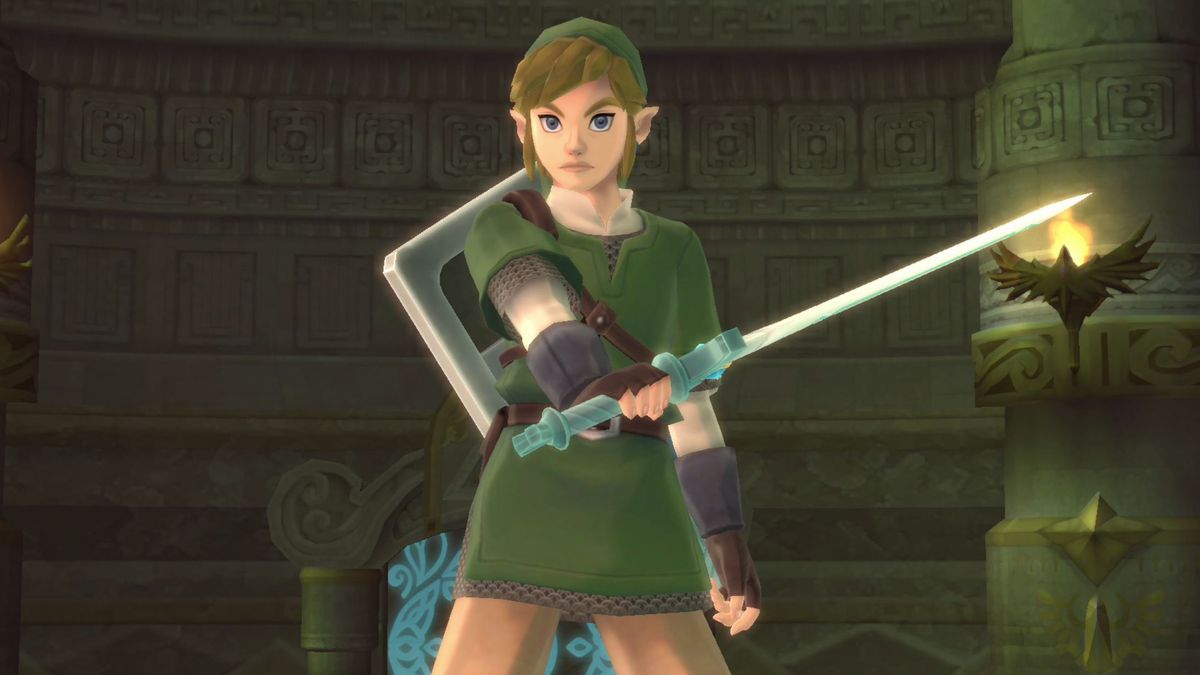Nintendo games are full of memorable character designs, many of which even non-gamers recognize. Out of all of those designs, though, Link and his green tunic are arguably the most recognizable (right behind Mario and his overalls, naturally). Nintendo makes it a point to ensure nearly every Legend of Zelda game includes the iconic tunic, but why? The games and lore make it abundantly clear almost every Link is a different person despite their shared personalities and seeming inability to speak, so why do they all dress the same?
Let’s start at the beginning. According to an interview with the magazine Gamekult (translated by Polygon), Shigeru Miyamoto stated the tunic design was selected due to themes and hardware limitations. The NES only let the team use three colors, and since the original Legend of Zelda title had so many forests (or at least what the console could render as forests), green was ultimately selected for Link’s clothes. Moreover, Miyamoto tasked game designer Takashi Tezuka with making Link easily seen and distinguishable, so features such as the equally-iconic green cap and long ears were added to Link’s design. Also, the character Peter Pan had a strong influence on the character’s model.
While Nintendo utilizes an ever-evolving series bible to keep track of how each entry in the Zelda franchise is related to the others, Miyamoto has never actually stated why each Link shares the same sense of fashion, though. It’s more of an unwritten rule of the series, but many entries still try to rationalize the choices within the context of their narratives.
For instance, in earlier titles, such as A Link Between Worlds and the original Legend of Zelda, the green tunic was deemed as blacksmithing clothes and traveling garments, respectively. There was no real attempt at unifying the look through broader narrative themes. However, as the series and its narrative capabilities grew, the developers did try to provide more elaborate explanations. However, these explanations usually fell into one of two camps: coincidence and honoring the past.
For instance, in The Legend of Zelda: Skyward Sword (the earliest game in the Zelda timeline), residents of Skyloft are given tunics when they graduate from the Knight Academy. Each year’s class sports different colors to denote when they graduated. The year Link graduated, the tunics were green. Meanwhile in The Legend of Zelda: Ocarina of Time, Link was adopted by the Kokiri and thus wears their clothes; it just so happens that they all wear green tunics and dresses with green, pointed hats. These are two notable examples of the “coincidence” explanation, which are usually found earlier in the Zelda timeline.
As for the “honoring the past” reason, those are usually found in the games that take place later on in the timeline. For instance, in The Legend of Zelda: Wind Waker and Link is given a green tunic as part of a tradition honoring the old Hero of Time. In The Legend of Zelda: Twilight Princess, Link’s green tunic is a hand-me-down from a previous Hylian hero. These in-game explanations are a quick and easy way of stating why every Link wears the same style of clothes, but every now and then, a game — and Link — breaks from tradition.
The Legend of Zelda: Tri Force Heroes and The Legend of Zelda: Breath of the Wild are two of the most obvious examples of Zelda games where Link doesn’t wear the iconic green tunic, or, to be more specific, can wear something other than the tunic. And surprisingly, the reasons behind their tunic-less heroes both stem from their gameplay designs.
During an interview with Game Informer, the director of Tri Force Heroes, Hiromasa Shikata, explained that a core mechanic of the game was power-ups that change player abilities, and he thought the best way to represent that feature was through clothing. So, the non-tunic costumes are essentially baked into the game design not only as a mechanic but as an easy way of letting players immediately distinguish what powers their allies have.
As for why Link doesn’t have his green tunic in Breath of the Wild…well, he does (you just need to clear the game’s 120 shrines to unlock the look). But that doesn’t answer why he initially wears a blue shirt, especially during flashbacks. Turns out that color was chosen thanks to the game’s landscapes. According to an art book (translated by Nintendo Life), the game’s producer, Eiji Aonuma, thought that the green tunic had become a little too iconic and that it was time to “mix things up.” So, he suggested a blue tunic. This turned out to be a great idea since the color stood out against the backgrounds concept artists created. Over 100 designs were created using Aonuma’s idea, many of which channeled an early concept where Link was, as Art Designer Yoshiyuki Oyama put it, “a traveler from the frontier who exudes a sense of adventure.” While that origin didn’t make it into the final game, it still heavily influenced the direction of many outfits.
So, like many of the more confusing aspects of The Legend of Zelda timeline, Link’s green tunic is largely a coincidence that Nintendo occasionally tries to offer an explanation for before moving on. Given the trailers of The Legend of Zelda: Tears of the Kingdom, this upcoming game’s Link won’t sport a green tunic either, at least not initially. Have we finally reached the end of the iconic green tunic?
